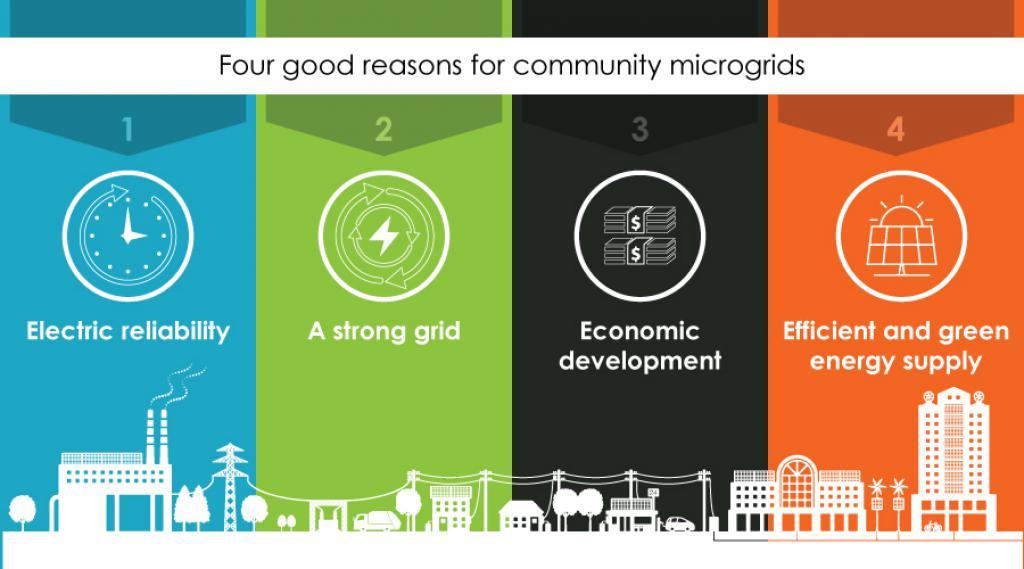First, we realized that we needed to support local businesses, Then local food. Now, the time for local energy has arrived. Meet the Brooklyn Microgrid.
As a former Brooklynite and long-time solar advocate, my first reaction was sheer joy. My second reaction was realizing that, by moving away from Brooklyn, I may be missing the single most revolutionary act of the decade. The time has come for disruption to happen in the utility industry, and it looks like the first shots of this revolution may be fired not far from the site of the Battle of Brooklyn. Unfortunately, General George Washington’s troops lost the battle of Brooklyn. Let’s hope these new revolutionaries have more luck taking on the empire than their predecessors.
What these solar revolutionaries have going for them is this: not only do they eliminate some of the issues that utility companies have with ongoing net metering policies, but they add “firming” to the local grid by providing peak shaving at times of heavy loads and creating a neighborhood back-up system to avoid the types of power outage problems experienced by Brooklynites during Hurricane Sandy. The Brooklyn microgrid website quote New York Governor Andrew Cuomo: ““Communities are taking an important first step toward securing their energy future. By ensuring a continuous energy supply, medical facilities and communities can more reliably provide critical services and be better protected in the event that disaster strikes. I encourage communities across the state to participate in the NY Prize program to make their energy systems stronger and more resilient.” This is not a situation where solar producers solely use the grid as storage. They are undeniably supplementing the grid, to the advantage of all parties involved.
How can this seemingly anarchistic utility upstart do business? The key to this model appears to be hanging on a blockchain framework. For those unfamiliar with blockchain technology, this is the open source system that makes Bitcoin a reality. According to our friends at Wikipedia: “A block chain or blockchain is a permissionless distributed database based on the bitcoin protocol that maintains a continuously growing list of data records hardened against tampering and revision, even by its operators.[1] The initial and most widely known application of blockchain technology is the public ledger of transactions for bitcoin,[2] which has been the inspiration for similar implementations often known as altchains.[3” In the case of the Brooklyn Microgrid project, the blockchain of choice is Ethereum. According to Ethereum.org: “Ethereum is a decentralized platform that runs smart contracts: applications that run exactly as programmed without any possibility of downtime, censorship, fraud or third party interference.
These apps run on a custom built blockchain, an enormously powerful shared global infrastructure that can move value around and represent the ownership of property. This enables developers to create markets, store registries of debts or promises, move funds in accordance with instructions given long in the past (like a will or a futures contract) and many other things that have not been invented yet, all without a middleman or counterparty risk.”
If the whole blockchain concept is still losing you, just remember this: it is decentralized. It is not a matter of using a broker to negotiate the power purchase contract between neighbors, nor is it a boilerplate for hammering out hard and fast deals. It is a completely voluntary agreement entered into by all parties involved, under a so-called “trustless” system. The blockchain may or may not prove to be a successful platform for the contractual agreements of all parties involved, but it certainly is an ambitious idea.
The point really is, succeed or fail, this is a truly forward-thinking and ambitious idea, and one that is long overdue in the solar/utility space. At a time when indie (rooftop) solar is under attack by the forces of the Koch Brothers and their legislative team at ALEC (American Legislative Exchange Council), the time has truly come for neighborhood solar microgrids to become a reality. It speaks volumes that partners in the Brooklyn Microgrid Project include ConEd ( the local utility) The City of Brooklyn, SolarCity, Siemens and other heavy hitters.
There has been a good deal of coverage touting the project as “The First Solar City, Fully Independent From the Grid.” Let’s just say that there is a certain amount of hype happening around the project. In reality, the goal of the Brooklyn Microgrid is to establish a solar network in just two neighborhoods of New York’s largest borough, the Park Slope and Gowanus areas. And for now, that’s enough.
Ironically, microgrids in the U.S. are not leading the global movement to microgrids. Not even close. In fact, according to Duke Energy former CEO Jim Rogers. “What Africa can perhaps teach us,” explains Rogers, “is an acceleration of the microgrid… The US will learn from Africa how to go “Back to the Future.” We will be going “Back to the Future” because when the grid was beginning in the early 1900s what we really had was a lot of little microgrids… and we connected them all together to create the grid we have today.” Similar to the way that African villages are acquiring and implementing off-grid systems, our businesses, neighborhoods, and homes can become a microgrid as well.





